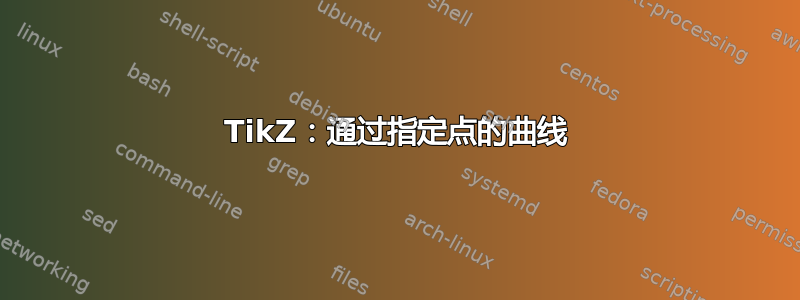
\documentclass{standalone}
\usepackage{comment}
\usepackage{tikz,pgf}
\usetikzlibrary{fit,scopes,calc,matrix,positioning,decorations.pathmorphing}
\begin{document}
\begin{tikzpicture}
\begin{scope}
\matrix (A5) [matrix of nodes, ampersand replacement = \&] {
{7} \& {2} \& {7} \& {7} \& {2} \& {8}\\
};
\end{scope}
\begin{scope}
\matrix (B5) at ([yshift=-2.5cm]A5-1-1.south) [anchor=B5-1-1.north, matrix of nodes, ampersand replacement = \&] {
{12} \& {7} \& {2} \& {7} \& {2} \& {8}\\
};
\end{scope}
\path[draw] (A5-1-3.north west) -- (A5-1-4.north east) -- (B5-1-4.south east) -- (B5-1-4.south west) -- (A5-1-3.north west);
\end{tikzpicture}
\end{document}
这里\path[draw]将两个矩阵中的 7 组合在一起。有没有办法用更“弯曲”的曲线将它们组合在一起?即通过一些看起来不那么规则的曲线。

答案1
像这样(请注意,我用 替换了你的最后一个坐标-- cycle)?
\draw [rounded corners=5pt]
(A5-1-3.north west) -- (A5-1-4.north east) --
(B5-1-4.south east) -- (B5-1-4.south west) -- cycle;

或者更像这样?
\draw
[decoration={random steps,segment length=6pt,amplitude=1.5pt},
decorate, rounded corners=2pt]
(A5-1-3.north west) -- (A5-1-4.north east) --
(B5-1-4.south east) -- (B5-1-4.south west) -- cycle

我更喜欢第一个,因为它看起来更符合印刷文本的风格。后者似乎有人攻击了你的论文 ;-)
附言:我不知道为什么曲折曲线不能自行闭合,也许有人可以修复这个问题,好吗?
答案2
将最后一行替换为:
\draw plot [smooth cycle,tension=0.3] coordinates {(A5-1-3.north west) (A5-1-4.north east) (B5-1-4.south east) (B5-1-4.south west)};
该选项smooth cycle会导致使用平滑曲线关闭点(因此您不会像原始代码中那样两次包含初始点)。
可以tension调整以适应。另请参阅TikZ 中的简单曲线。

\documentclass{standalone}
\usepackage{comment}
\usepackage{tikz,pgf}
\usetikzlibrary{fit,scopes,calc,matrix,positioning,decorations.pathmorphing}
\begin{document}
\begin{tikzpicture}
\begin{scope}
\matrix (A5) [matrix of nodes, ampersand replacement = \&] {
{7} \& {2} \& {7} \& {7} \& {2} \& {8}\\
};
\end{scope}
\begin{scope}
\matrix (B5) at ([yshift=-2.5cm]A5-1-1.south) [anchor=B5-1-1.north, matrix of nodes, ampersand replacement = \&] {
{12} \& {7} \& {2} \& {7} \& {2} \& {8}\\
};
\end{scope}
\draw plot [smooth cycle,tension=0.3] coordinates {(A5-1-3.north west) (A5-1-4.north east) (B5-1-4.south east) (B5-1-4.south west)};
\end{tikzpicture}
\end{document}


